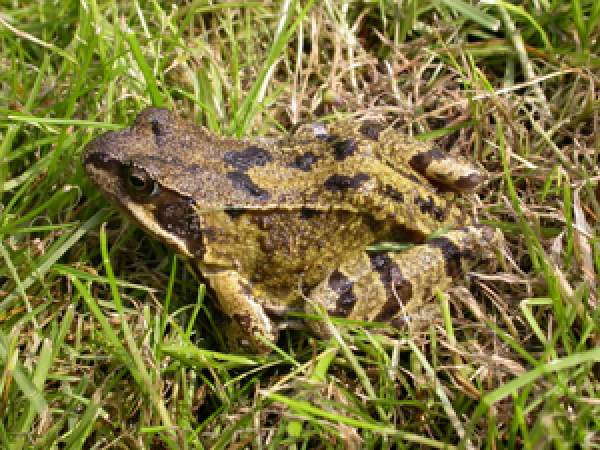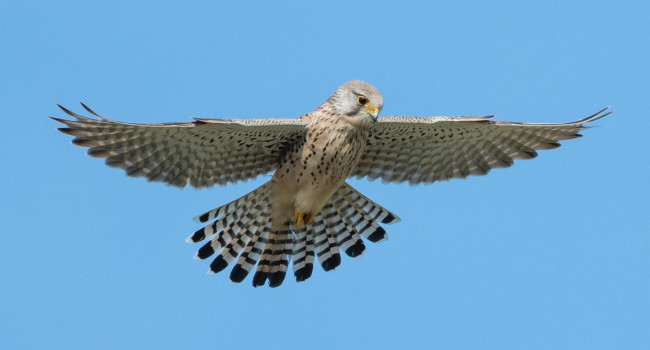Common Frog

Rana temporaria
The Common Frog should be familiar to most individuals, with its brown or olive-green colouration and mixed pattern of darker markings. There is a light coloured stripe down each side of the body. Individuals showing unusual colouration are sometimes reported including some that are bright orange, red or yellow in tone. It is also worth noting that there are a number of other frog species present in Britain, several of which are similar in their general appearance. These include Pool Frog, Edible Frog and Marsh Frog.
In recent years, there have been widespread reports of frogs succumbing to a disease known as 'redleg'. There are a number of different symptoms including bleeding under the skin and it is this that results in red colouration from which the name 'redleg' is derived. The disease itself is caused by a virus, followed by secondary bacterial and fungal infection. There is no known treatment but invariably, some individuals at a pond will survive the outbreak and from these, the population often recovers. To help reduce the risk of the disease spreading from one pond to another, it is best not transfer spawn or adults between ponds.
The Common Frog has limited protection from sale and trade under the Wildlife and Countryside Act 1981.
Common Frogs spawn in a wide variety of ponds but appear to favour those with a certain degree of water flow. Individuals usually return to the pond in which they were born and will make this journey year after year. The males tend to arrive first and there is often strong competition amongst males to find a mate. A male will attach himself to a suitable mate (a condition known as amplexus) and the two individuals may remain attached for up to 24 hours during which time the eggs will be laid and fertilized. A male may mate with several females on successive nights. Mating and spawning is usual over by the beginning of May (though may be later in more northerly latitudes) and most adults move away from the breeding pond within a few days of mating.
Frogspawn is a remarkable material. It is 99.7% water and dissipates heat very slowly, which means that the egg mass is maintained at a higher temperature than the surrounding water. In addition, the egg mass is permeable to water currents, ensuring that all eggs within the mass receive adequate supplies of oxygen. The temperature at which the eggs and emergent tadpoles develop influences the speed of development but by the beginning of August, most of the resulting froglets will have left the breeding pond.
Adult Common Frogs eat a wide range of aquatic and terrestrial invertebrates including worms and molluscs.






Share this page